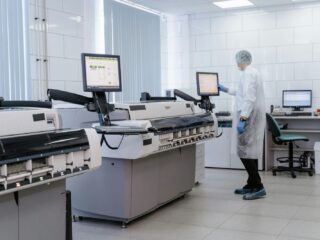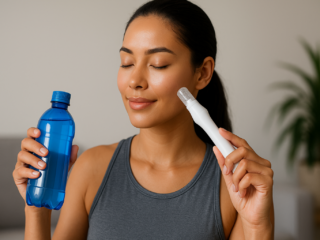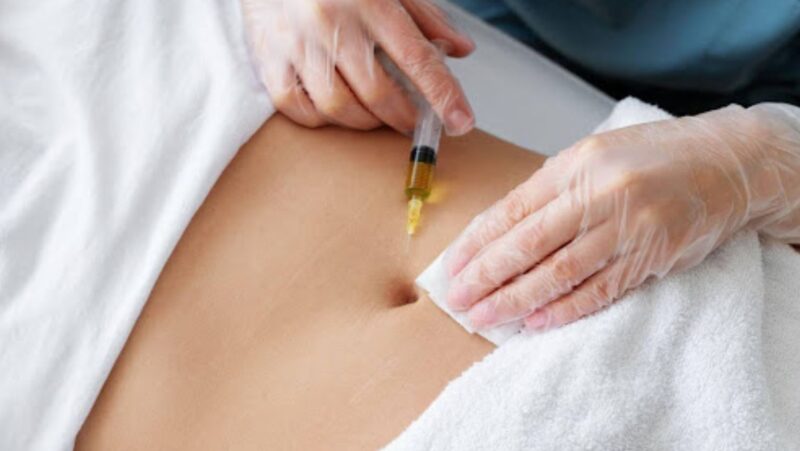
Facial surgery recovery is as much about self-care preparation as surgical skill. Many patients focus solely on choosing the right surgeon but overlook the crucial recovery preparation that can make or break their results. The truth is, proper facial surgery recovery self care starts weeks before your procedure and continues long after, transforming what could be a challenging experience into an opportunity for enhanced wellness habits.
Pre-Surgery Body Preparation: Setting Your Foundation
The 4-6 weeks before your facial surgery represent a critical window for optimizing your body’s healing potential. Research shows that patients following structured preparation protocols experience 40% fewer complications and achieve final results up to 4 months faster than those without systematic preparation.
Nutritional Preparation
Your body needs premium fuel to heal effectively. Increase your protein intake to 80+ grams daily from high-quality sources like lean meats, fish, and legumes. These provide essential amino acids for tissue repair and collagen synthesis. Load up on anti-inflammatory foods including citrus fruits, berries, and dark leafy greens to combat oxidative stress.
Eliminate processed foods, refined sugars, and alcohol 4-6 weeks before surgery. These suppress immune function and impair wound healing when your body needs to be at peak performance.
Smart Supplement Strategy
Evidence-based supplement protocols can significantly improve your outcomes. Vitamin C (500-1,000mg daily) supports collagen synthesis, while vitamin A (10,000-25,000 IU daily) boosts immune function. Zinc (15-30mg daily) is crucial for cellular repair.
However, you must discontinue blood-thinning supplements including vitamin E, fish oil, and herbal supplements like ginkgo and garlic 7-14 days before surgery to prevent bleeding complications.
Lifestyle Optimization
If you smoke, cessation is non-negotiable. Research shows a 50% reduction in wound complications with proper 4-week minimum cessation timing. Your surgeon may require verification through testing, as proper healing depends on optimal blood flow to tissues.
Focus on getting 7-9 hours of quality sleep nightly and managing stress through meditation or yoga. High stress levels impair immune function and tissue regeneration.
Understanding Recovery Timelines by Procedure Type
Different facial procedures have unique recovery requirements that affect your wellness routine and daily activities.
Rhinoplasty Recovery Considerations
Dr. Diepenbrock, who provides expert nose job surgery in Fort Wayne, notes that rhinoplasty patients need specific breathing support strategies and sleep positioning modifications for optimal healing. Unlike other facial procedures, nasal surgery involves complete congestion for 48-72 hours, requiring mouth breathing and specialized care protocols.
Rhinoplasty recovery extends 12-18 months for final results, significantly longer than other procedures due to complex nasal anatomy. Activity restrictions are more extensive, with no nose blowing for 3-4 weeks and exercise limitations extending 6 weeks versus 2-4 weeks for other facial surgeries.
Facelift and Eyelid Surgery
Facelift recovery progresses more rapidly, with 75% of patients returning to work within 2 weeks. Peak swelling occurs days 3-4, with significant improvement visible by weeks 3-4. Eyelid surgery proves least restrictive, often requiring only over-the-counter pain management with most patients returning to work within 10-14 days.

Essential Self-Care Protocols During Recovery
Your recovery success depends on precise execution of evidence-based self-care strategies.
Sleep and Rest Management
Sleep positioning represents the most critical intervention. Maintain 30-45 degree head elevation for 7-14 days minimum to promote lymphatic drainage and reduce swelling. Since 66% of people naturally sleep on their side, you’ll need accommodation strategies like wedge pillows or reclining chairs.
Nutrition for Healing
Your nutritional needs increase dramatically during recovery. Aim for 60-100 grams of protein daily, vitamin C at 500mg-2g daily, and maintain hydration with 8-10 glasses of water. Anti-inflammatory foods like cantaloupe (113mg vitamin C per half), red bell peppers, and sweet potatoes provide essential healing nutrients.
Activity Progression
Follow evidence-based activity timelines: Week 1 allows three 5-minute walks daily while avoiding lifting over 5 pounds. Week 2 permits longer walks with possible return to office work. Weeks 3-4 allow light activities, while weeks 5-6 enable return to 75% normal exercise with surgeon approval.
Wound Care Excellence
Keep incisions covered with sterile dressing for first 48 hours, then gentle cleansing with saline solution. Apply thin Aquaphor layers three times daily while avoiding alcohol or peroxide. Remember that suture removal timelines vary by location.

Managing Common Recovery Challenges
Swelling Management
Peak swelling occurs 48-72 hours post-surgery across all facial procedures. Combat this with head elevation at 30-45 degrees, cold therapy for the first 24-48 hours using wrapped ice packs for 15-20 minute intervals, and strict adherence to activity restrictions.
Natural Pain Management
Modern pain management emphasizes multimodal approaches. Combine scheduled acetaminophen with NSAIDs as first-line therapy, reserving short-term opioids for breakthrough pain only. This achieves superior pain control with reduced side effects.
Emotional Self-Care
It’s normal to experience temporary mood changes and concerns about your appearance during swelling phases. However, seek professional support if you experience depression lasting more than 2 weeks or severe anxiety affecting daily function.
Sleep Quality Optimization
Recovery sleep can be challenging due to positioning restrictions. Create a comfortable environment with multiple pillows, consider a wedge pillow or recliner, keep medications and water nearby, and maintain your bedroom cool and dark for better rest quality.
Long-Term Recovery and Wellness Integration
Months 2-6: Optimizing Your Results
As you enter the final recovery phase, focus on advanced scar care using silicone gel or sheets if recommended. Gradually return to full fitness routines with surgeon approval, and maintain strict sun protection with minimum SPF 30 for 6 months to prevent scar darkening.
Lifestyle Integration
Transform recovery lessons into ongoing wellness habits. The nutrition protocols that supported your healing can become your foundation for long-term health. The stress management techniques you learned can continue benefiting your overall well-being.
Protecting Your Investment
Your surgical results represent a significant investment in yourself. Maintain that investment through continued excellent skincare, sun protection, healthy lifestyle choices, and regular follow-ups with your surgical team.
When to Contact Your Surgeon vs. Self-Care Management
Seek immediate medical attention for:
- Sudden severe pain increases
- Signs of infection (fever, spreading redness, discharge)
- Breathing difficulties or sudden visual changes
- Signs of hematoma (painful hard masses with bruising)
Manage with self-care:
- Expected swelling patterns and predictable bruising progression
- Managed pain levels responding to prescribed medications
- Minor sleep difficulties related to positioning
- Normal emotional adjustments during healing
Consult your surgeon for:
- Moderate pain increases beyond expected patterns
- Asymmetric swelling development
- Prolonged depression or anxiety beyond 2 weeks
- Swelling persisting without improvement beyond 4 weeks

Your Self-Care Recovery Success
Comprehensive facial surgery recovery self care transforms a potentially challenging experience into an opportunity for enhanced wellness habits and optimal results. Remember that recovery is not just about waiting to heal – it’s about actively participating in your body’s remarkable ability to restore and rejuvenate itself.
The evidence is clear: patients who approach recovery with systematic self-care protocols experience better outcomes, faster healing, and greater satisfaction with their results. By preparing your body properly, following evidence-based recovery protocols, and maintaining realistic expectations, you’re setting yourself up for the best possible surgical experience.
Your journey to optimal recovery starts with education, continues with preparation, and succeeds through consistent, mindful self-care. Every step you take to support your body’s healing process is an investment in both your surgical results and your long-term wellness.












